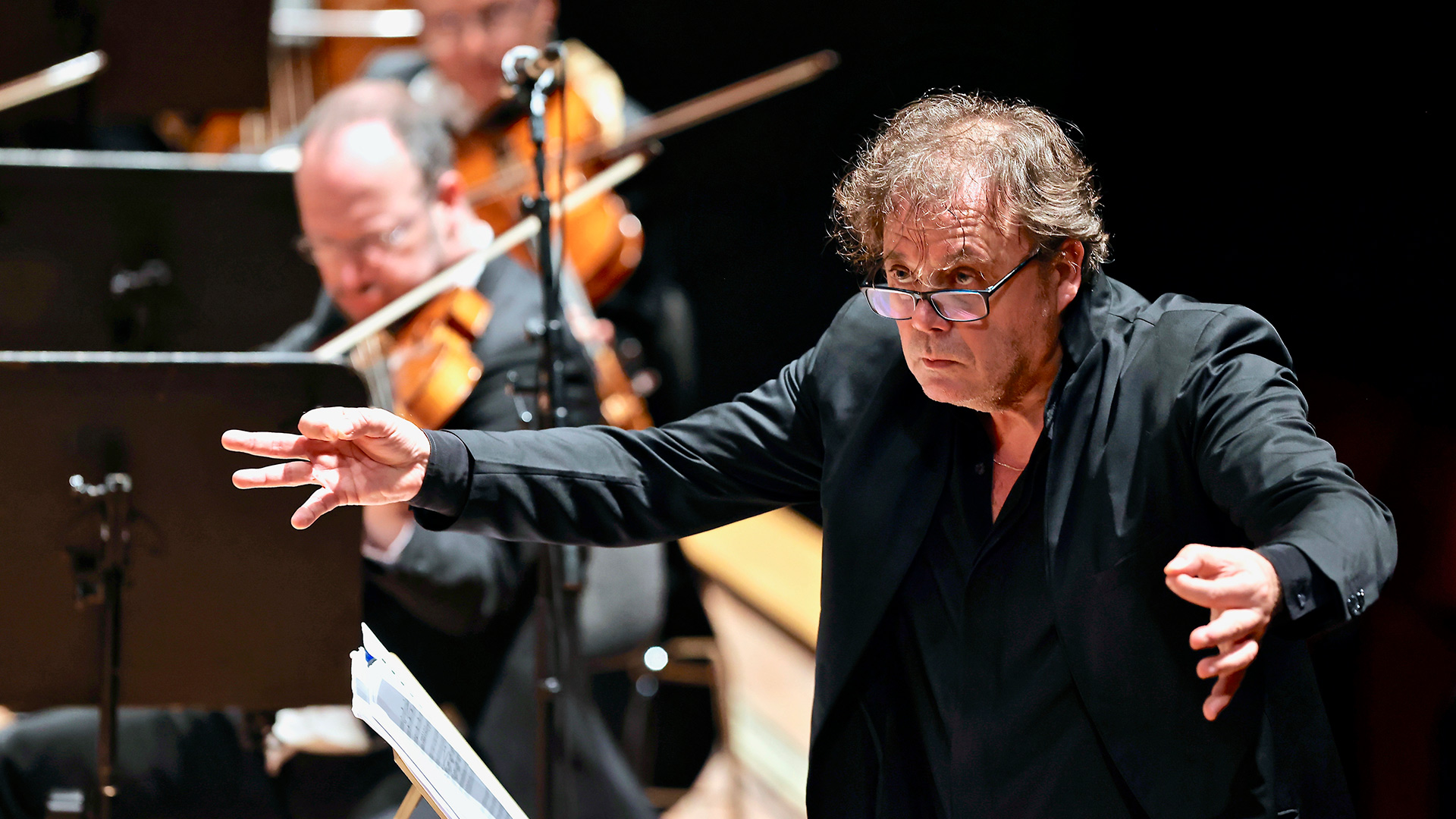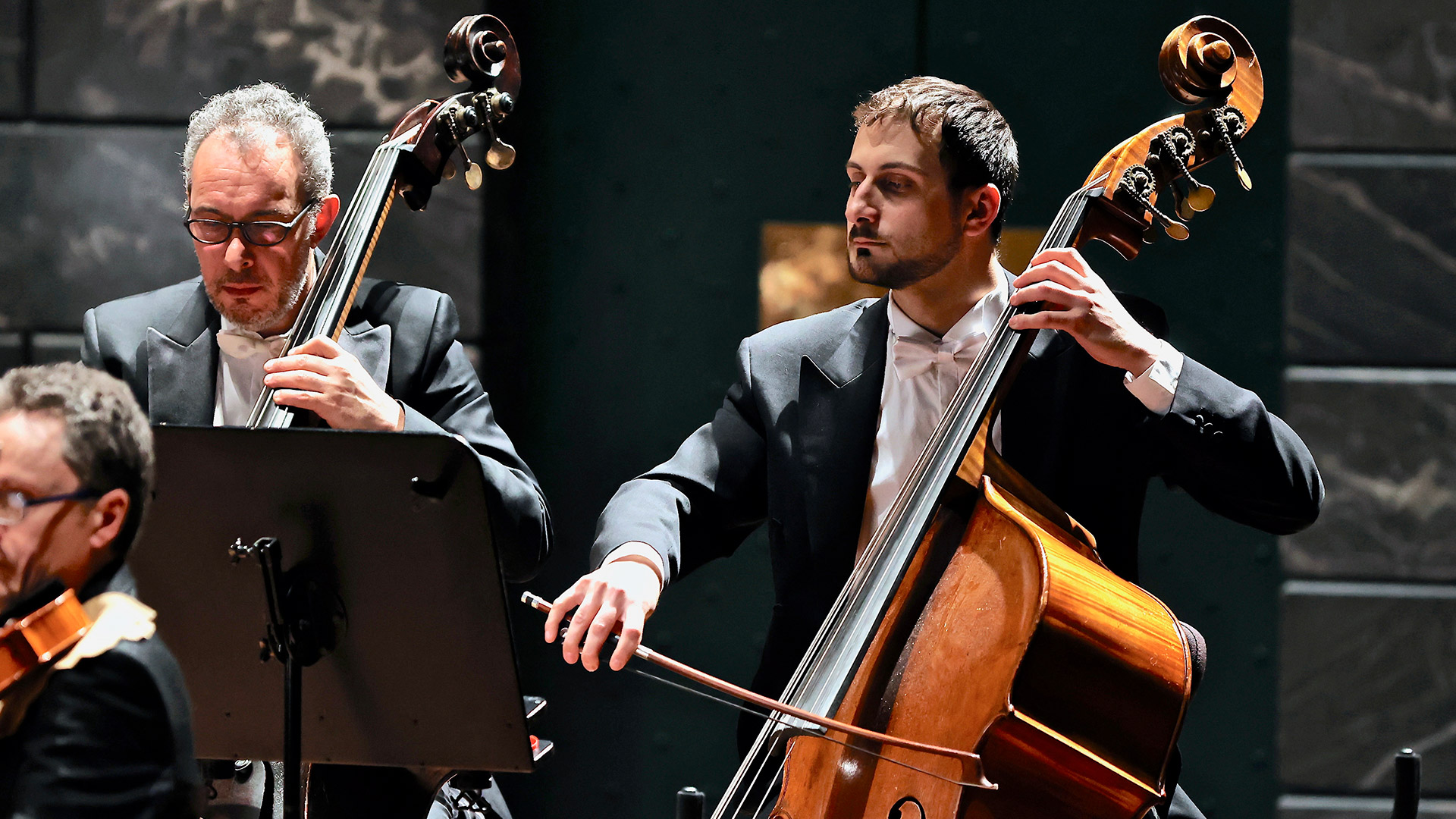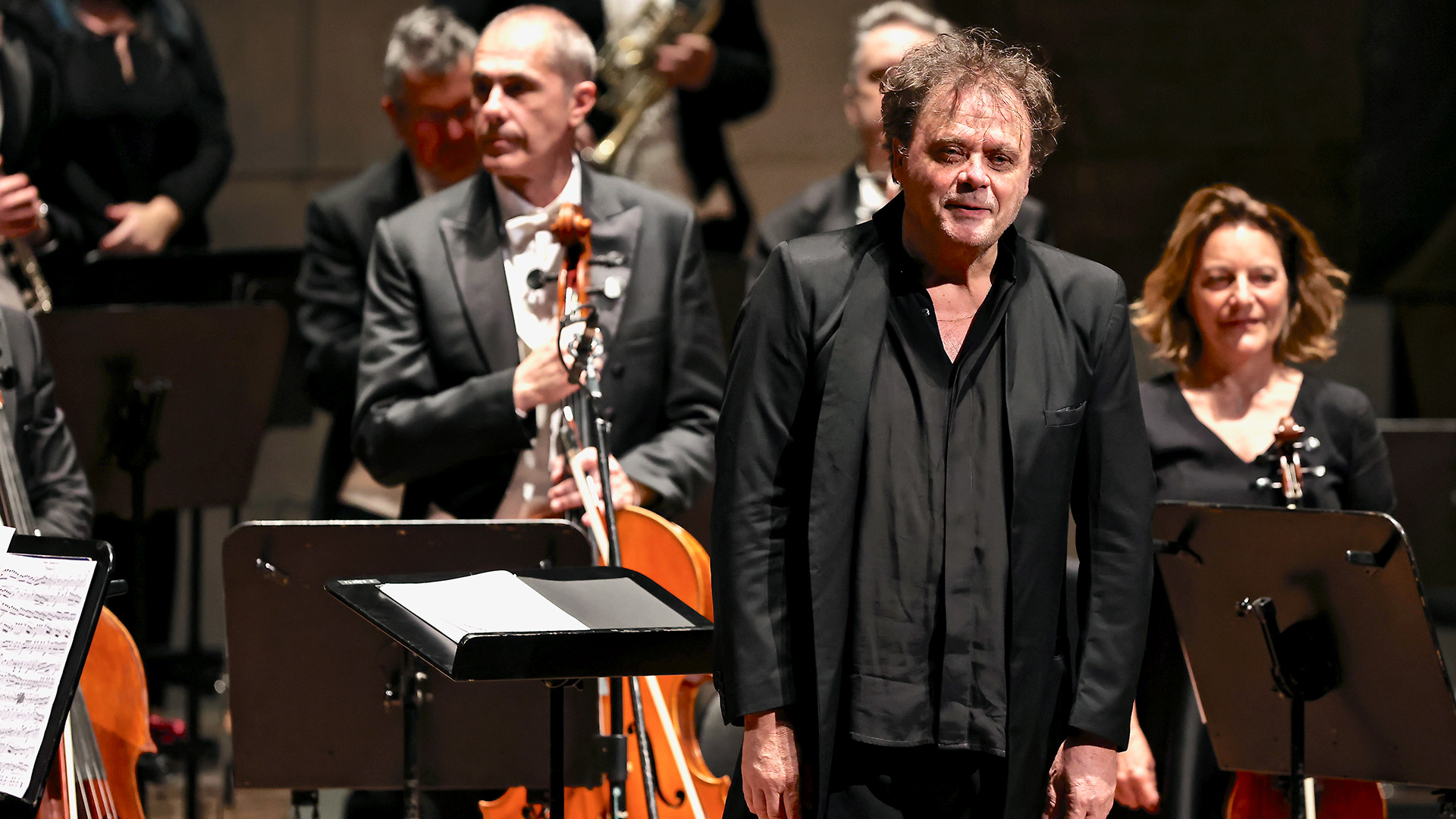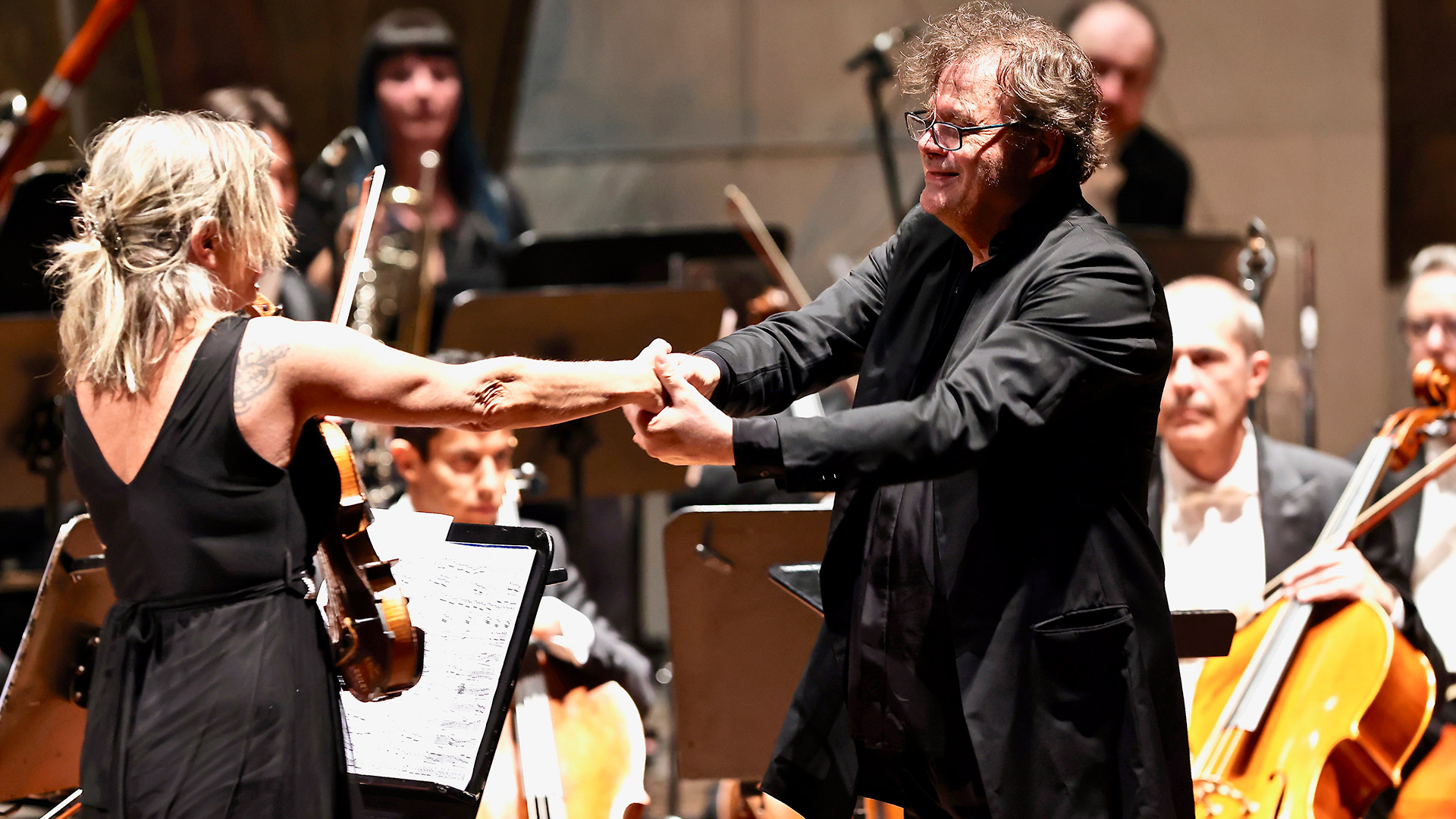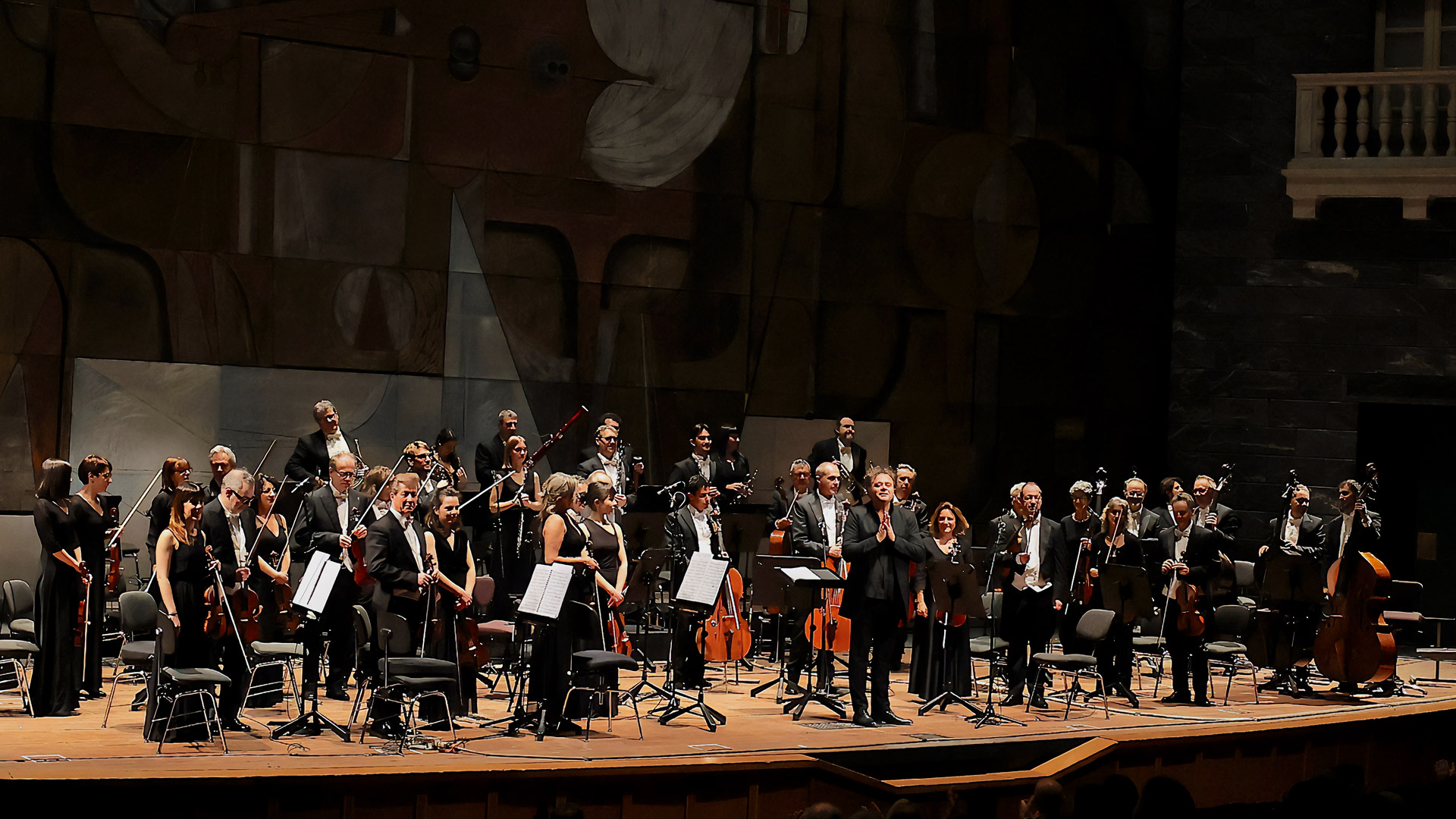ANDREA LUCHESI
Symphony n. 5 in E major WK 4
WOLFGANG AMADEUS MOZART
Symphony n. 40 in G minor K. 550
WOLFGANG AMADEUS MOZART
Symphony n. 41 in C major Jupiter K. 551
Conductor
Ottavio Dantone
Opera Carlo Felice Genova Orchestra
Andrea Luchesi was a composer and organist. Born in 1741 in Motta di Livenza, now in the province of Treviso, he later settled in Bonn, where he was Maestro di cappella until his death in 1801. With the Bonn orchestra he worked very intensively, with a musical research that was always up-to-date and refined. Among the most distinguished musicians with whom he collaborated is the name of the young Ludwig van Beethoven, viola of the orchestra in the early 1990s. As a composer, Luchesi devoted himself to various musical genres, especially sacred music but also instrumental music. The Symphony n. 5 in E major belongs to a group of six symphonies composed before 1768, and is entirely consistent with the symphonic model also employed in the others, in three movements. The symphony genre was then in its infancy and Luchesi contributed to its establishment at a time when the baroque concerto still prevailed. The tripartite form – Allegro, Andante, Presto – was at that time particularly congenial to symphonic discourse, allowing sufficient space for varied but at the same time cohesive and concise articulation. Luchesi’s style is surprisingly advanced, particularly in terms of orchestral writing, which is balanced, brilliant and of remarkable thematic invention.
The symphonies K. 550 and K. 551 belong, together with K. 543, to a cycle of three symphonies that Mozart composed in the summer of 1788, completed on 26 June, 25 July and 10 August respectively. It is probably the composer’s highest symphonic expression, and consequently three of the highest masterpieces ever composed in the symphonic genre. Despite the fact that Mozart was able to compose at impressive speed, his ability to produce three works of such complexity and characterisation in such a short period of time remains astounding, especially considering that they were not produced on commission, but only with a view to a possible future performance. In fact, we have no certain information about the performance of any of the three symphonies in the remaining three years of the composer’s life.
The Symphony K. 550 opens with a restless and haunting Molto allegro in sonata form. The first theme, entrusted to the violins, is one of Mozart’s most famous. The strong contrast between themes is emphasised by an incessant dialogue between the parts, which chase each other until the end of the shot. This is followed by an Andante in a major mode with a lighter but predominantly melancholic tone, almost in a gallant style, in which the thematic protagonism is played by the woodwinds. The Minuet has a harsh character and a contrapuntal approach that is far removed from the usual dance-like tempo, while it is the Trio and the Allegretto of the third movement that return the usual light and sparkling note. Finally, the Allegro assai closes the circle by resuming the atmosphere of the initial Molto allegro, with even more accentuated contrasts and a more assertive tone. The intense and consistent patheticism of this Symphony would, within a few years, make it one of the most loved by composers of the German Romantic School. Symphony K. 551 is Mozart’s last symphony, the title Jupiter was given in the early 19th century, probably by an impresario. Here the composer experiments with extending the sonata form to all four movements, an innovative idea that celebrates and expands the most symbolic form of instrumental music. The opening Allegro vivace, with no introduction, attacks with spirit. Right from the start, the richness of the counterpoint emerges, which will be constant in all four movements. The Andante cantabile follows, more ethereal and sublime, but not without surprising shadows and contrasts. The Minuet has an introductory function to the finale, with a special focus on the rhythmic, almost martial aspect. In closing, a Molto allegro of such a contrapuntal level that it resembles a true fugue. The first theme, another one of Mozart’s most famous, is elaborated according to a principle of imitation, and from it a varied thematic material develops, creating a structure of incredible complexity until the concluding triumph in C major.
With the Symphonies K. 550 and K. 551 Mozart left a legacy of immeasurable value, the definitive sum of 18th century symphonism and the starting point, starting with Beethoven, for a new romantic conception of the symphony.
Ludovica Gelpi
